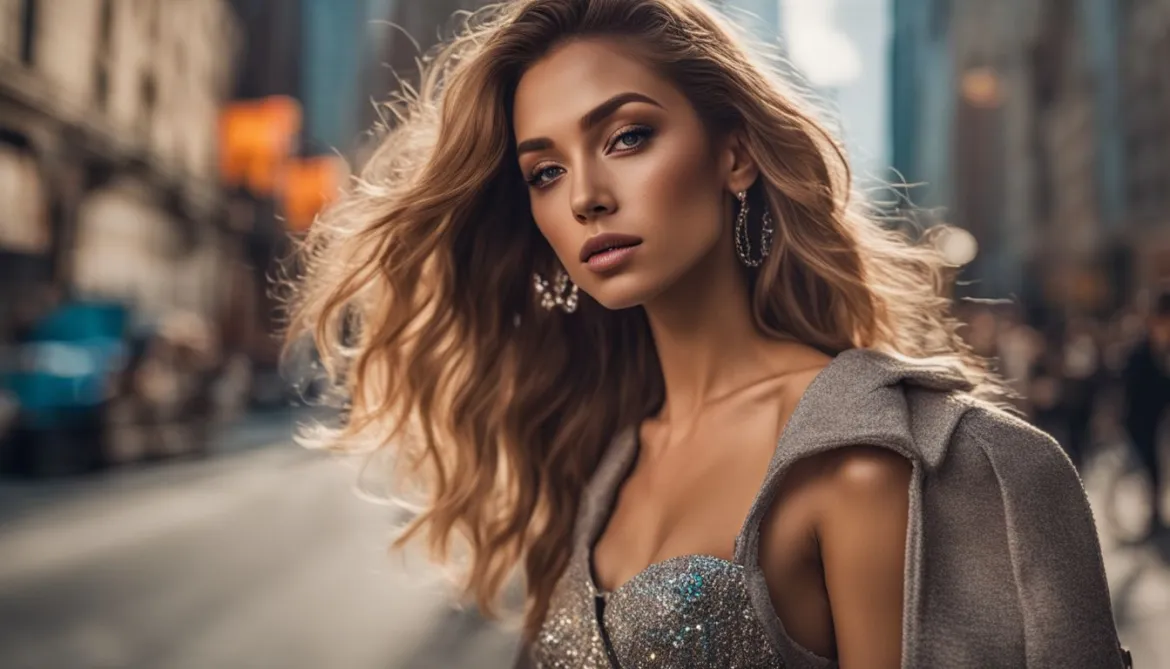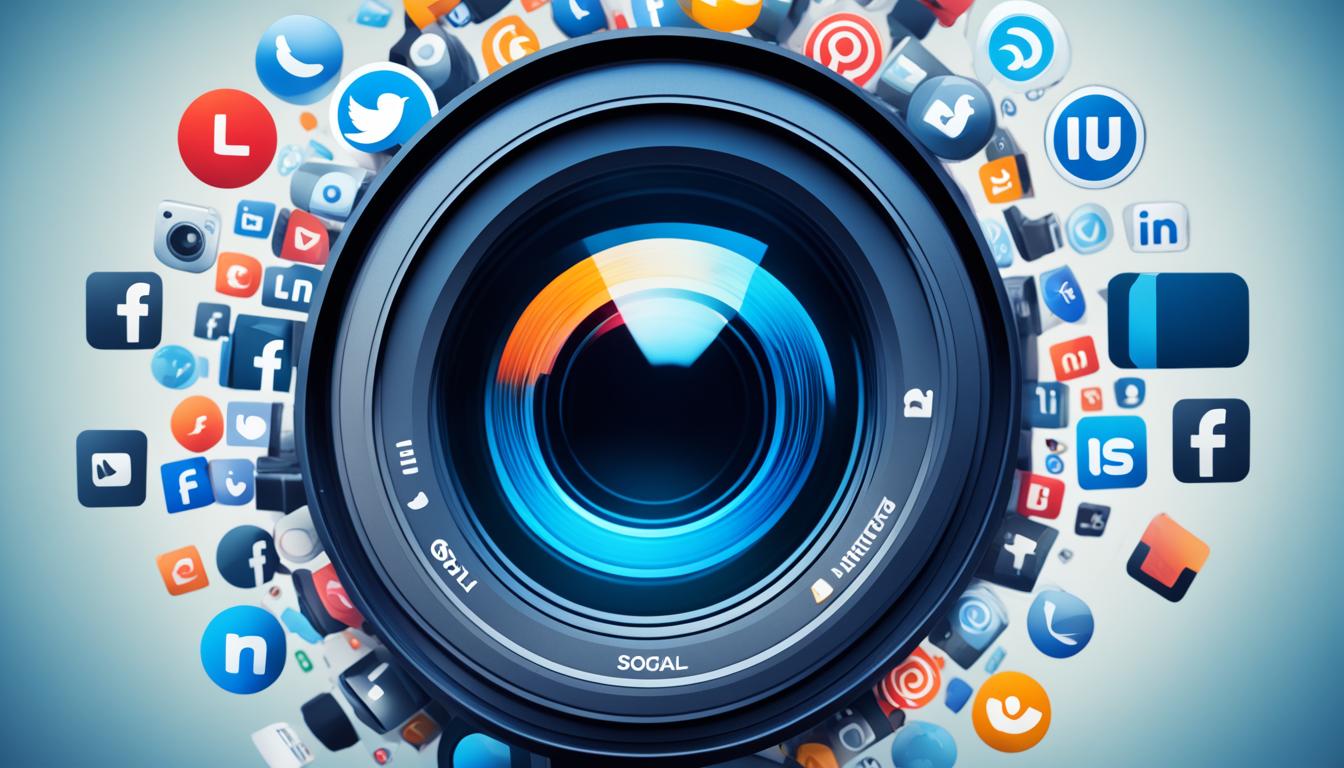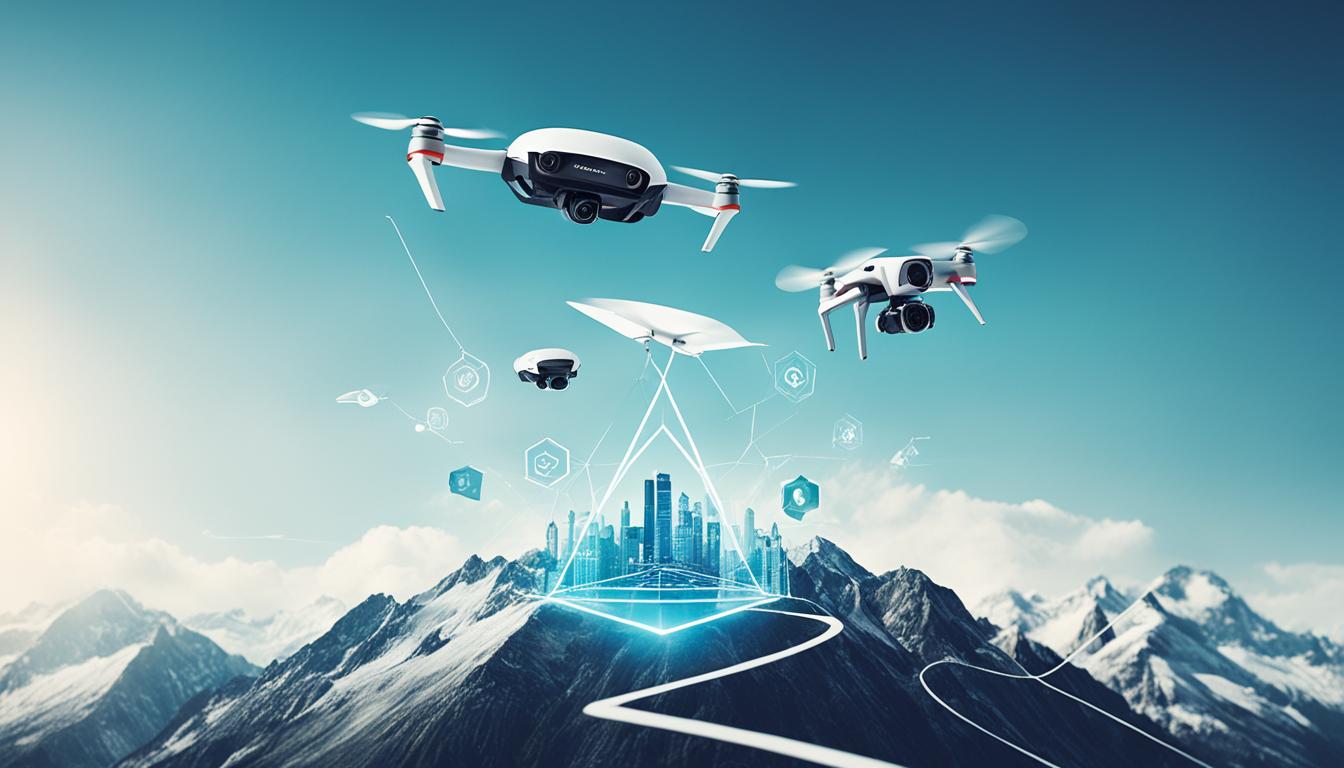Welcome to our comprehensive guide on editorial photography. Whether you’re an aspiring photographer looking to enhance your skills or a curious reader interested in learning more about this captivating art form, you’ve come to the right place. In this section, we will explore the concepts and practices involved in editorial photography, providing you with valuable tips and techniques to help you excel in this creative field.
Editorial photography is a unique form of visual storytelling that is widely used in print and online publications. Unlike other types of photography, its main objective is to support narratives and convey a specific mood or tone for a piece. You’ll often find editorial photographs gracing the pages of magazines, newspapers, and editorial features, where they captivate audiences and enhance the overall reading experience.
Whether you’re expressing a powerful emotion, showcasing a fashion trend, or shedding light on a thought-provoking issue, editorial photography offers endless possibilities for creativity and expression. In this guide, we’ll provide you with insights into what editorial photography is all about, how it differs from commercial photography, and the essential steps and techniques involved in creating captivating editorial photographs.
So, whether you’re a seasoned professional or just starting your journey in the world of photography, this guide will equip you with the knowledge and inspiration to dive into the world of editorial photography and create impactful visual narratives.
Key Takeaways:
- Editorial photography is a form of visual storytelling used in publications.
- It focuses on conveying a specific mood or tone for the piece.
- Editorial photography differs from commercial photography in its purpose and goals.
- Creating editorial photographs involves careful planning, from concept to execution.
- Composition and lighting play crucial roles in the success of editorial photographs.
What is Editorial Photography?
Editorial photography is a type of photography that aims to tell a story or portray a concept. It is commonly found in magazines, newspapers, and editorial features. Unlike commercial photography, which focuses on selling products or services, editorial photography relies more on storytelling and engagement. Examples of editorial photography can be seen in magazines like Vanity Fair, where photographers capture moments that represent a pivotal moment or concept. Composition and lighting play important roles in creating compelling editorial photographs.
Composition in Editorial Photography
In editorial photography, composition is key to creating visually appealing and impactful images. It involves arranging elements within the frame to guide the viewer’s eye and convey the intended message. A well-composed photograph can draw the viewer in and capture their attention. Some composition techniques commonly used in editorial photography include:
- The rule of thirds: By dividing the image into nine equal parts using two horizontal and two vertical lines, you can place key elements along the lines or their intersections to create balance and visual interest.
- Framing: Using objects within the frame to create a frame within a frame can add depth and focus to the subject.
- Leading lines: Lines, such as roads, fences, or architectural features, can lead the viewer’s eye into the image and towards the focal point.
- Symmetry: Symmetrical compositions can create a sense of balance and harmony in the image.
Lighting in Editorial Photography
Lighting is another critical element in editorial photography, as it helps set the mood, enhance storytelling, and bring the subject to life. Different lighting techniques can be used to create various effects:
- Natural light: Utilizing the available natural light can produce a soft and organic look.
- Studio lighting: Using artificial lights in a controlled environment allows for precise manipulation of light and shadows to create the desired atmosphere.
- Off-camera flash: Adding a burst of light from a separate light source can highlight specific areas or subjects within the frame.
Experimenting with these lighting techniques can help you achieve the desired mood and visual impact in your editorial photographs.
The Difference Between Editorial and Commercial Photography
When it comes to photography, there are various genres and styles that serve different purposes. Two prominent forms of photography are editorial and commercial photography. While they may share some similarities, their objectives and outcomes diverge significantly.
Commercial photography centers around promoting brands, products, or services. It aims to capture attention, create desire, and ultimately drive consumer action. You’ll commonly find commercial photography in advertisements, packaging designs, and entertainment promotions. Whether it’s a sleek product shot or a lifestyle image showcasing a brand’s values, commercial photography is all about selling.
Editorial photography, on the other hand, focuses on storytelling and expressing ideas. It serves as a visual narrative, supporting articles and features in magazines, newspapers, and journalism publications. Editorial photography adds depth, emotion, and context to written content, aiming to engage readers and convey messages beyond mere product promotion. It can capture candid moments, portray social issues, or evoke a specific mood to amplify the story being told.
Understanding the differences between these two photography styles is crucial, especially for those aspiring to pursue a career in editorial photography. Whereas commercial photography is driven by a commercial agenda, editorial photography prioritizes the power of visual storytelling and the expression of ideas.
“Commercial photography aims to sell, while editorial photography aims to captivate and evoke emotions.”
Table: Differences Between Editorial and Commercial Photography
| Factor | Commercial Photography | Editorial Photography |
|---|---|---|
| Purpose | Promote brands, products, or services | Tell stories and express ideas |
| Placement | Advertisements, packaging, promotions | Magazines, newspapers, journalism |
| Goal | Drive consumer action and sales | Engage readers and convey messages |
| Style | Clean, polished, and visually appealing | Authentic, narrative-driven, and emotional |
By recognizing the distinctions between editorial and commercial photography, photographers can approach each style with the appropriate mindset and techniques. Whether you’re aiming to sell a product or convey a captivating story, both genres offer unique opportunities to showcase your creativity, skills, and vision.

Creating Editorial Photography: Steps and Techniques
Creating editorial photography involves several steps and techniques that contribute to the overall storytelling and impact of your photographs. By following these steps and honing your skills, you can create compelling visual narratives that engage your audience.
Determining the Story or Concept
The first step in creating editorial photography is to determine the story or concept you want to convey through your photographs. This serves as the blueprint for your shoot, guiding your artistic decisions and ensuring cohesion in your images. Whether it’s a fashion spread or a news feature, clarity of vision is essential for effective storytelling.
Visualizing the Aesthetic with a Mood Board
To develop the aesthetic for your editorial photoshoot, consider creating a mood board. A mood board is a collage of images, colors, and textures that captures the desired atmosphere and style of the project. It helps you visualize your ideas and communicate them effectively with your team, ensuring everyone is aligned on the creative direction.
Assembling the Right Team
Collaborating with the right team is crucial for successful editorial photography. This includes casting the right models who fit the desired look and feel of the story. Hair and makeup artists, stylists, and prop stylists can also contribute to the overall visual narrative. Make sure to communicate your vision clearly to the team, enabling them to bring your concept to life.
Choosing the Perfect Location
The location sets the stage for your editorial photographs. Whether it’s a scenic outdoor landscape or an architectural masterpiece, the location should align with your concept and enhance the storytelling. Scout potential locations and consider their visual appeal, accessibility, and suitability for your shoot.
Styling Your Subjects
Styling your subjects involves carefully selecting and coordinating their wardrobe, accessories, and props. The styling choices should align with the concept and contribute to the overall narrative. Pay attention to details, textures, and colors to create a cohesive visual experience for your audience.
By following these steps and techniques, you can create editorial photography that tells compelling stories and captivates your audience. Remember to experiment, refine your skills, and develop your unique style to stand out in this creative field.
Composition Techniques for Editorial Photography
Composition is a fundamental aspect of editorial photography that can make or break the visual impact of your images. It plays a crucial role in guiding the viewer’s eye, conveying the intended message, and creating visually appealing and engaging compositions. By understanding and applying various composition techniques, you can elevate your editorial photographs to new heights.
One of the most commonly used composition techniques in editorial photography is the rule of thirds. This technique involves dividing the frame into a grid of nine equal parts using two horizontal and two vertical lines. By placing key elements of your composition along these lines or at their intersections, you can create a balanced and visually pleasing image.
Framing is another effective composition technique that adds depth and visual interest to your editorial photographs. It involves using elements within the frame, such as a doorway, window, or foliage, to frame your main subject. This technique draws the viewer’s attention to the subject while providing context and enhancing the storytelling aspect of the image.
Leading lines are powerful composition tools that can guide the viewer’s eye through your photograph. These lines can be found in various forms, such as roads, railings, or even patterns on the ground. By strategically incorporating leading lines into your composition, you can create a sense of movement and direct the viewer’s gaze towards the main subject or focal point.
Symmetry is another composition technique that can create a strong visual impact in editorial photography. By placing elements symmetrically within the frame, you can create a sense of balance and harmony. Symmetry can be found in architectural structures, natural landscapes, or even in the positioning of models and props. It adds a layer of aesthetic appeal to your images and creates a pleasing visual experience for the viewer.
Examples of Effective Composition
Let’s take a look at some editorial photography examples that showcase effective composition techniques:
“Image Source: Editorial Photography Example”
In this photograph, the rule of thirds is applied by positioning the main subject along one of the vertical lines. The framing technique is used to frame the subject within a doorway, adding depth and context to the image. Leading lines in the form of a pathway guide the viewer’s eye towards the subject, creating a sense of movement. The symmetry of the architecture further enhances the visual impact and adds a touch of elegance to the composition.
By studying and analyzing these examples, you can gain insights into how composition techniques can enhance the storytelling aspect of your editorial photographs. Experiment with these techniques, practice framing your subjects, and explore the use of leading lines and symmetry to create visually captivating compositions.
In the next section, we will dive into the importance of lighting in editorial photography and explore different lighting techniques to enhance the visual impact of your images.
Lighting in Editorial Photography
When it comes to editorial photography, lighting plays a crucial role in setting the mood, enhancing storytelling, and creating visual interest. It has the power to transform a simple image into a captivating visual narrative. By understanding and utilizing different lighting techniques, you can achieve the desired effect in your editorial photographs and bring your vision to life.
There are various lighting techniques to consider, each with its own unique qualities and capabilities:
- Natural Light: Harness the beauty of natural light to create a soft, organic feel in your images. Whether it’s capturing the warm glow of the golden hour or the dramatic shadows during sunset, natural light can add depth and dimension to your editorial photographs.
- Studio Lighting: In a controlled environment like a studio, you have the freedom to manipulate light to suit your creative vision. Experimenting with different setups, such as using softboxes, umbrellas, or reflectors, can help you achieve the desired mood and aesthetic.
- Off-Camera Flash: Adding an off-camera flash to your lighting setup can allow for more flexibility and creativity. It can help you create dynamic lighting effects, highlight specific elements, and add a touch of drama to your editorial photographs.
Understanding and mastering these lighting techniques will enable you to create visually stunning and impactful editorial photographs. By experimenting with light and shadows, you can add depth, dimension, and visual interest to your images, elevating the overall storytelling experience.
Remember, lighting is not just about brightness. It’s about creating the right ambiance, showcasing details, and evoking emotions. Take the time to study different lighting setups, practice, and refine your skills. With dedication and knowledge of lighting techniques, you can transform your editorial photographs into captivating visual stories.
| Advantages of Natural Light in Editorial Photography | Advantages of Studio Lighting in Editorial Photography | Advantages of Off-Camera Flash in Editorial Photography |
|---|---|---|
| 1. Soft, organic feel | 1. Controlled environment | 1. Flexibility and creativity |
| 2. Beautiful golden hour and sunset lighting | 2. Manipulate light for desired mood | 2. Dynamic lighting effects |
| 3. Depth and dimension in images | 3. Consistent and controlled results | 3. Highlight specific elements |
Editing and Post-Processing for Editorial Photography
In the world of editorial photography, editing and post-processing play a crucial role in enhancing the final impact of your images. This stage allows us to fine-tune our photographs, ensuring they align with our initial concept and convey the intended mood effectively.
During the editing process, we have the opportunity to explore various techniques and enhance the visual elements that make our photos stand out. We can adjust exposure levels, fine-tune colors, and even add special effects if desired, all while preserving a natural and authentic look.
To achieve this, we rely on powerful editing software like Adore Photoshop or Lightroom. These tools provide us with a wide range of capabilities, enabling us to take our editorial photographs to the next level. Through careful attention to details, we ensure that our final images align with our creative vision.
Whether it’s fine-tuning colors, adjusting contrast, or sharpening details, the editing process allows us to refine our images and create a harmonious and impactful visual narrative. By utilizing various editorial photography techniques during the post-processing stage, we can enhance the overall mood and storytelling of our photographs.
It’s important to remember that while editing can elevate our images, it’s crucial to strike a balance. We aim to maintain the authenticity and integrity of our initial concept while enhancing the visual impact. The ultimate goal is to create compelling and captivating editorial photographs that evoke emotions and engage the audience.
In the table below, you’ll find an overview of the editing and post-processing techniques that can be applied to editorial photography:
| Technique | Description |
|---|---|
| Color grading | Adjusting the color tones and hues to create a specific mood or atmosphere. |
| Exposure adjustment | Tweaking the brightness and contrast levels to enhance details and overall lighting. |
| Retouching | Removing imperfections, blemishes, or distractions to create clean and polished images. |
| Cropping and composition | Refining the framing and composition to strengthen the visual impact and storytelling. |
| Special effects | Adding unique effects or filters to create a distinctive look and artistic expression. |
Remember, the editing and post-processing stage should be approached with a clear vision and purpose. Always aim to enhance the overall narrative and convey the intended message through your editorial photographs.

By mastering the art of editing and post-processing in the editorial photography workflow, we can elevate our photographs and captivate our audience with compelling visual storytelling.
Conclusion
In conclusion, editorial photography is a powerful form of visual storytelling. By understanding the concepts and practices involved, mastering composition techniques, utilizing lighting effectively, and refining your editing skills, you can create impactful and engaging editorial photographs.
Remember to stay true to the story or concept you want to convey and develop your own unique style and aesthetic. A comprehensive editorial photography style guide can serve as a valuable resource in guiding your creative decisions and maintaining consistency throughout your work.
With dedication and practice, you can become a proficient editorial photographer. Continuously explore, experiment, and challenge yourself to push the boundaries of your creativity. By honing your skills, you can create compelling visual narratives that captivate audiences and leave a lasting impression.
FAQ
What is editorial photography?
Editorial photography is a form of photography that is used to support storytelling and narratives in print or online publications. It focuses on creating a specific mood or tone for the piece and can be found in magazines, newspapers, and editorial features.
How does editorial photography differ from commercial photography?
Commercial photography aims to promote brands and products, whereas editorial photography is more focused on storytelling and expressing ideas. Commercial photography is often seen in advertisements and entertainment promotions, while editorial photography is found in magazines, newspapers, and journalism.
What are the steps involved in creating editorial photography?
The steps involved in creating editorial photography include determining the story or concept, creating a mood board, casting the right models, assembling a team, choosing the right location, and styling the subjects.
What role does composition play in editorial photography?
Composition helps guide the viewer’s eye, create a strong visual impact, and convey the intended message. Techniques such as the rule of thirds, framing, leading lines, and symmetry can be used to create visually appealing and engaging compositions.
How does lighting affect editorial photography?
Lighting sets the mood, enhances the storytelling, and creates visual interest in editorial photography. Different lighting techniques, such as natural light, studio lighting, and off-camera flash, can be used to achieve the desired effect and add depth and dimension to the images.
What is the importance of editing and post-processing in editorial photography?
Editing and post-processing allow photographers to fine-tune their images, enhance colors, adjust exposure, and add special effects if desired. It helps maintain a natural and authentic look while enhancing the visual impact of the photographs.
How Can I Apply Future Trends in Editorial Photography to Current Practices?
To apply the future of editorial photography to current practices, start by staying updated on emerging trends. This includes incorporating advanced technology, experimenting with unconventional perspectives, and embracing new visual storytelling techniques. By constantly evolving and adapting, you can seamlessly integrate the future of editorial photography into your current work.




